18th SEPTEMBER 2015 LOKMANYA TILAK-GANESH CHATURTHI AND SHIV JAYANTI
|
Gananayak Ganapati
Shree Ganesh presents altogether a different image compared to other deities. He is called Ganapati because he is the God of group (Gana). He keeps intact identity (swatva) of all the members of the group under him, maintains their self-respect but at the same time he very skillfully sees that the members of the group love their group. Ganesh has the art of keeping them disciplined without hurting their pride. Ganapati, the leader, must be non-egoistic and must have the ability to appreciate virtues of others and help to promote them. Only in this way will he retain his hold on the group. The members of the group should be ready for self-offering (samarpan) for Ganapati. In self-offering there should be self-respect and modesty but not fear, arrogance and helplessness. The life of self-offering person is a truly developed life. In self-offering all the strength and faculties are to be utilised for the leader of the group (Gananayak). The mind and intellect of all the members of the group will be dedicated to him and they will think of him only.
 |
God has bestowed on each creature different power in a lesser or a higher degree. That creature should use that power with discretion (vivek). When one uses this power for one's selfish gains only, the power instead of being beneficial for the good of the people and for the welfare of the society turns out to be harmful and destructive. God is the bestower of this power. The creature has not acquired that by itself. This power should be used by it to attain prosperity and progress. Only a human being is capable of doing this. The creator of this world does not approve of using this power by the human beings for their selfish ends and thereby display its destructive nature. The power should be used for the welfare only. Just as the power should be used properly for the welfare of the society, it should also be used for the Almighty. The power employed only for selfish gains turns out to be inhuman and monstrous and the power used for God (Narayan) turns into Narayani shakti. This is what Lord Ganapati desires from the heart of hearts. Ganapati suggests this beneficial way by his own conduct.
|
If one observes closely the image of Shree Ganesh, we can see him in Omkar form. If we invoke this form (Omkar swaroop) before commencing any work, it succeeds without any obstacles. By worshipping this deity in Omkar swaroop, the divine power in man is awakened and this power fulfils all his worldly desires as well as desires pertaining to the other world. When this phenomenal power of Omkar pervades day to day life of any person, his mission of life may be considered as fulfilled.
|  |
This deity is also worshipped as 'Vratpataye'. For rooting out beastly passions from human life and turning it into a pure divine life, Vow (Vrat) is most essential. Vrat purifies the human mind and intellect. Observance of Vrat is very important for shaping the character and retaining it as such in pure form. Just as Vratpati is a form of Ganapati there is an another form viz. 'Vratyapati'. At present the uncivilised people are dominating the society. Therefore discontent, dissatisfaction and unrest are riding over human life. To do away with this state of affairs and to make human life joyful for ever and contented, we must invoke this deity.
|
Gananayak Ganapati (contd...) Restraints for Collective Existence
|
Lord Ganesh - An Objective View
In our day-today life we have seen that a very popular personality is often revered to such an extent that its personality gets surrounded by legends and sometimes even the powers of performing miracles are attributed to it. So much so that it appears like a fiction. An increasing influence of these, over the years makes the real personality rather hazy and mystic. Why, even if we go some centuries back we will find that even saints and historical figures of those times have become legends in their own time. If that is the case about mortal beings then there is no wonder about the interesting tales/ stories that surround several Gods and Goddesses of our Hindu Religion- a religion which dates back to thousands of years. Among all these, Lord Ganesh -a Protector and the one who enlightens us - is one prominent deity which is held in highest reverence by the masses.
| |||
Lord Ganesh - An Objective View (contd...)
|
Ganpati and Moon
Ganapati and moon is the favourite topic of the mythological stories. This relationship has to be viewed from logical angle. Astrology presupposes existence of close relationship between Moon and the Mind. It is observed that behavioural pattern of the mentally unstable people undergoes certain changes on No Moon and Full Moon Days. The word Lunatic is derived from the word Lunar i.e. Moon. Just as there are different phases of Moon each day the moods of the mind also keep on changing because of its fickle nature. Therefore, it is no wonder that story depicts the Moon (symbolising the fickle mind, emotion and passion) making mockery of Ganapati (an embodiment of discretion and wisdom) riding on 'mouse' (representing maya i.e. illusion, firmly under control). However, this story also tells us that the devotees of Ganapati observe the fast on the "Chaturthi" (fourth day of the month of the Hindu Calendar) and this fast is broken only after seeing the Moon. According to Hindu tradition each day has a presiding deity e.g. Pratipada (i.e. first day) is presided over by Agni i.e. Fire, second day ( i.e. dwitiya) is presided over Brahma, Third (Tritiya) by Gauri, Fourth by Ganapati and so on. However, these days (i.e. tithis) signify a state of mind. All our day-to-day actions are normally carried out in three phases of state of mind i.e. Jagruti (Total awareness) Swapna (i.e. sub-consciousness) and third is Sushupti (i.e. profound sleep). However, according to study of spiritualism, beyond these three states of mind there is also a fourth state known as Turya (i.e. Turia, simple state of consciousness) or Unmani and which is indicative of stage beyond any state of mind. As the moon is related to the moods of mind, not to look at the moon signifies going beyond above mentioned three states of mind by winning over its fickleness and becoming one with the God. As we have to carry on our day-to-day activities we cannot afford to remain in this fourth state i.e. Unmani and thus has to return to normal three states of mind i.e. Jagruti, Swapna and Sushupti explained earlier. Looking at Moon before breaking fast signifies returning back to above said three states of mind. Thus if we co-relate the symbolsGanapati, Mouse and the Moon then, the whole concept of Yoga and Spiritual Science becomes clear.
| 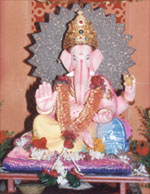 |
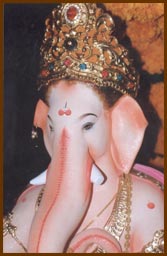 |
Lord Ganapati is described in many ways like Vakratund (having a crooked mouth), Lambodar (pot-bellied) Shurpa Karna (having ears like a sifting pan), Raktavarna (Red Coloured), Ekdanta (single toothed) etc. The word Vakratund when fully expanded becomes 'Vakran Tundyati Sah' meaning thereby that the Vakratunda is one who punishes the crooked ones, disciplines the wrongdoers. Similarly 'Shurpakarnak' means the one having ears as big as sifting pan. Symbolically it means that just as sifting pan is used to separate what is required and throw out unnecessary from the grain, similarly the big ears receives what is worth and keep out what is not and Ganapati being leader of the Gana (people) it becomes all the more necessary for him to hear everybody but judiciously accept what is important or proper. Being elephant headed the trunk become inevitable part of his person. The trunk of Elephant is presumed to be highly sensitive. This sensitivity helps the Elephant in identifying the dangers of other wild animals.
|
Raktavarni (Red Coloured) Ganapati
It is believed that Ganapati is fond of Red Colour and hence he is painted in Red-lead colour and is offered red flowers. While this red colour is symbolic, the belief has its source in certain concepts, conventions, and mythological stories etc. However, it is the peculiarity of the Indian heritage that to know the appropriate meaning behind these stories and concepts one has to properly and minutely understand the various aspects of Religion, Science of Yoga, Astrology, Jurisprudence etc. In the absence of such understanding a wrong picture gets presented. This has become evident in the conclusions drawn by the occidentals while studying Indian Culture. While their zeal to study the Indian Culture is an event to be welcomed their lack of deep understanding of Hindu ethos becomes a main reason for drawing wrong conclusions. However, though this can be overlooked as slight aberration, it becomes a matter of pity when our own intellectuals start towing their line. Interpretation of symbolic red colour ofGanapati by them can be a specimen example.
|
A relation between Ganapati and the red colour can best be explained by leaning on the science of Yoga. This science believes that by constant practice of Yoga, consistent meditation and spiritual practices a vital latent power located in the coccygeal vertebra can be awakened/ gets awakened. This latent power, on awakening, starts rising upward towards brain through spinal cord or vertebral column. On its journey this power has to pass through seven chakras (i.e. osseous labyrinths). These labyrinths (chakras) are the seven stages of upward journey of Aadimaya. The first labyrinth is known as Muladhar Chakra (Basic foundation) where it is believed Ganapati resides. It is well known that in Atharvashrisha (verses extollingGanapati's virtues) also a reference to this is found.
This base (Muladhar) being close to the Kundalini (vital latent power in a body), its brilliance and red colour is reflected on the body of Ganesh and thus Ganeshacquires red colour. | 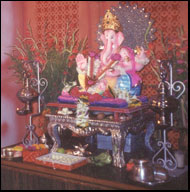 |
Saint Dyaneshwar has illustrated this beautiful image of Ganapti in the first chapter of Dyaneshwari. Though Ganapati basically does not have any attributes or shapes; because of its proximity to this Kundalini-became Red in colour and naturally red flowers and red lead paint are his favourites. Description of Ganapati in such symbolic manner is peculiar to the Indian style of presentation over the years and this fact has to be borne in mind at all times.
From this exposition it becomes quite clear that though those stories describingGanapati, appears to be meaningless or without any substance prima-facie, it is not so. These stories are a medium through which an invaluable established truth is impressed on the minds of the people. Though gradually amusement factor of stories become prominent and basic meaning behind the stories was sidelined, if we remain conscious about certain ideas in the Indian culture it will not be difficult to find the correct interpretation of the meaning which appears to be mystic. Before concluding it has to be borne in mind that preservation of this meaning is our responsibility.
Damodarshastri Godse
Excerpts translated from the Marathi article in
"Sarvajanik Ganeshotsav Shatakachi Vatchal" |
Festivals are an integral part of human cultural life. From ancient times they have been celebrated not only in India but also in different parts of the world. 'Olympian' celebrated by Greeks, 'Pithian' to promote poetry writing and 'Nimiyan' to exhibit skills in martial arts are, to name a few, some of the festivals celebrated outside India in ancient times. The Ganesh festival, which has its origins in Maharashtra in India, has been celebrated for over a century.
Ganesh festival prior to 1893
In the good old days Ganesh festival was a purely family affair. According to the eminent historian Shri Rajwade, records reveal that it was celebrated even during the reigns of Satwahana, Rashtrakuta and Chalukya. There are also references in historical records to similar celebrations during Peshwa times, Lord Ganapati being the family deity of the Peshwas. The celebration would commence on the first day of the month of Bhadrapada and would go on for ten days. Years later it became a practice to end the festivities on 'Anant Chaturdashi' with the immersion of the Ganapati idol in water. The celebrations were universally popular with rich and poor alike. The poor were given sweets and clothes. Upper caste Brahmins were fed on delicious meals. On the concluding day, the idol of Lord Ganesh was carried in a beautifully decorated palanquin in a ceremonial procession and taken to the river for immersion.
The last of the Ganesh festivals during the Peshwa regime was celebrated in the year 1815 when Bajirao II held the power. The year 1818 saw the end of Peshwa rule with Union Jack being unfurled on the great Shaniwar-Wada. Among the valuables the Britishers took away was a 'ruby'eyed Ganesh idol made in pure gold studded with diamonds and rubies. It was reportedly valued at £ 50000 in those days. After the end of Peshwa rule, from 1818 to 1892 Ganesh Festival remained a family affair in Maharashtra. Emulating the example of Peshwas, princely states of Baroda and Gwalior too involved common people in the Ganesh festival. Lokmanya Tilak was witness in 1892 where he saw the grand scale on which the festival was celebrated in Gwalior and the enthusiastic participation of people therein. This alone inspired him to make the Ganesh festival a public event in Maharashtra. However it needs to be mentioned here that social and political conditions of those times seemed ripe for making such a move.
The last of the Ganesh festivals during the Peshwa regime was celebrated in the year 1815 when Bajirao II held the power. The year 1818 saw the end of Peshwa rule with Union Jack being unfurled on the great Shaniwar-Wada. Among the valuables the Britishers took away was a 'ruby'eyed Ganesh idol made in pure gold studded with diamonds and rubies. It was reportedly valued at £ 50000 in those days. After the end of Peshwa rule, from 1818 to 1892 Ganesh Festival remained a family affair in Maharashtra. Emulating the example of Peshwas, princely states of Baroda and Gwalior too involved common people in the Ganesh festival. Lokmanya Tilak was witness in 1892 where he saw the grand scale on which the festival was celebrated in Gwalior and the enthusiastic participation of people therein. This alone inspired him to make the Ganesh festival a public event in Maharashtra. However it needs to be mentioned here that social and political conditions of those times seemed ripe for making such a move.
Background for making Ganesh Festival as public event
in 1893 by Lokmanaya Tilak
in 1893 by Lokmanaya Tilak
 |
Apart from social and political situation existing then, Lokmanya Tilak an erudite person he was, had come across the writings about the different festivals observed in Ancient Egypt and was also a witness to the Ganpati Festival in Gwalior State which inspired him to start a similar public celebration of Ganesh Festival. Around 1892-93 the influence of Christianity on Indian psyche had become quite obvious. Christian life-style, culture, their concepts of religion, morality and worship made deep impressions on the Indian mind. Indians were so dazzled by the progress made by westerners in science and technology that they started rubbishing our ancient learning of no consequence in the modern world. People took pride in imitating westerners. Tilak whose mind was deeply rooted in ancient Hindu culture and traditions, viewed the developing situation as alarming. He saw an urgent need to reshape the Indian society based on our own heritage and philosophy. He severely criticised the blind imitation of western ways and said that it amounted to spiritual and moral bankruptcy. Mr. Tilak raised a very pertinent question that those who are blindly following the Britishers and their culture can really occupy the places of those very Britishers in the Indian administration! The 1893 Hindu-Muslim riots at Pune and Mumbai further added to his restlessness. Like a true nationalist he desired to emphasise and preserve the national sentiment by giving due credit to all that was good in the old system. He wanted to unite the Hindus but he was not against Islam. He was only opposed to those Muslims incited as they were by the British to favour and actively participate in the riots.
|
Public Celebrations of Ganesh Festival-A Brief History. (contd...)
Tilak wished to bring about social change for political reasons too. He was convinced that social change was the key to political awareness. The country was under a foreign rule. It was necessary to arouse the masses to oppose the tyrannical British Rule. It was necessary to stir the masses and mobilise public opinion for national ends. He wanted his ideas to reach the common people, make them aware of British Govt.'s oppressive policies, inculcate a strong sense of nationalism and the need to attain Swaraj that is freedom from the foreign rule.
To achieve the desired result it was necessary to awaken the masses and what else would be fit than the already popular Ganesh festival? It is in these circumstances that in 1893 he appealed to the people to make it a festival of masses.
To achieve the desired result it was necessary to awaken the masses and what else would be fit than the already popular Ganesh festival? It is in these circumstances that in 1893 he appealed to the people to make it a festival of masses.
 |
Ganesh Chaturthi is celebrated with great enthusiasm in Maharashtra. People invoke the blessings of Lord Ganesh for prosperity and wisdom and pray for his help in removing all obstacles. Tilak's appeal had a miraculous effect and people responded positively. 1893 saw the beginning of Ganesh festival as a public and popular event with Shri Bhau Rangari, Shri Khajgiwale, and Shri Ghotwadekar in Pune and residents of Keshavji Naik Chawl in Mumbai acting as pioneers.
In 1894 the festival spread to other places throughout Maharashtra. Year after year, the number kept increasing. His writings in Kesari and Maharatta and his public speeches had great influence in making the festival a truly public and participative event. |
Festivals unite people. Ganesh festival provided him a necessary platform to arouse them to oppose the reign of terror. His ideas propagated through speeches and writing commanded wide attention forcing the British Govt. to sit up and take notice.
During this period, even 'Kirtans', a form of folk art, a kind of one man chat and musical show, promoting ideas contained in Indian mythology underwent great transformation. In what is now called Rashtriya Kirtan saw the initiation of movement to boycott of foreign made goods, promote the use of swadeshi (indigenous) goods to encourage education based on oriental values and for shunning of alcoholic drinks. Anti-British campaign through these activities naturally made the authorities apprehensive and there was an attempt to curb them. However, in keeping with their policy of non-interference in religious matters the Govt. did not ban such programmes and festivities. In the event, it was Tilak who succeeded in his mission of creating mass public awareness and imparting education on Indian values through public festivals like the Ganesh festival and Shivaji festival. No one can deny the role played by Ganesh festival in mobolising support for the freedom struggle in Maharashtra and elsewhere. It is indeed sad that when India became a free country on 15th August 1947 that Tilak who struggled and suffered throughout his life to achieve this dream did not live to see it happen. |
DGanesh Festival in Free India.
From 1893 till Mr. Tilak breathed his last in 1920 public festival of Ganpati was mainly in the nature of platform for national awakening and social education. With these prime motives Lectures of eminent personalities and performances of 'Mela' (a group of singers comprising men & women) were the programmes, which used to be organised in Ganesh Festival. However, after the demise of Lokmanya Tilak this nature gradually underwent a change. Progammes for speeches to educate the masses on national problems and songs to inspire nationalism and self respect have given way to farcical skits, dramas and other forms of entertainment such as musical concerts, mimicry, etc. Independence ushered in still more changes. Exposure to the scientific progress, changes in the life style of Indian people and more so of those in Maharashtra, changes in values etc. resulted in the metamorphosing the psyche of the masses. Consequently it brought about visible changes in the concept of public festival of Ganpati. This occasion became more of an event of celebration resulting into lavish decoration, impressive processions, and creation of huge Ganesh Idols. The current emphasis is on splendour financed by coercive contributions collected from gullible public and loud music adding environmental pollution seem to be the order of the day. The ever increasing size and height of the Ganesh idols creates problems at immersion time. Vulgar dancing by inebriated young man during the processions spoils the sanctity of the festival. As a result a school of thought emerged which felt that as independence was achieved; public celebration of Ganpati Festival can be dispensed with. On an introspection of the way the festival has been celebrated since independence and particularly in the last decade or so one becomes inclined to share the view about the necessity of continuing the festival.
 |
It is always easy to criticise. However, in the eagerness to criticise one must not lose the sight of the constructive work done by various organisers of the Ganesh Festival. One would be doing injustice to them. One cannot overlook the fact that many celebrities from the cultural fields such as Theatre, Film and Music had their initiations in the programmes presented in the Ganpati Festivals. Increasing number of Ganpati Festivals also brought with it economic activity for Artists, Pandal Contractors, Decorators etc.
|
It can not be denied that a situation has to be created whereby the Ganpati festival which played a pivotal role in winning the freedom for the country can also help in making it a welfare state. However, this is possible only if the educated and enlightened class once again start actively participating in the conduct of Ganpati Festival and restructures its activities. This is the need of the hour.
Maybe we need another Tilak-a true visionary-to refocus on what such festivals can and ought to do.
Vinay Rahatekar
|
esigned, Developed, Maintained and Hosted by India Web Services, Inc.
Designed, Developed, Maintained and Hosted by India Web Services, Inc.
Designed, Developed, Maintained and Hosted by India Web Services, Inc.
Centenary Ganesh Festival
August 31, 1992 to September 10,1992 the 11 days that proved historical and memorable for the Keshavji Naik Chawls.
As regards, the entire 1992 was significant for the present and past residents of the chawls. It was essential to celebrate the centenary of the first Ganesh festival in Mumbai on a grand scale.
As regards, the entire 1992 was significant for the present and past residents of the chawls. It was essential to celebrate the centenary of the first Ganesh festival in Mumbai on a grand scale.
 |
Our centenary celebrations did not remain restricted to the 10 days of the festival; they actually started in the previous year and went on for an entire year. The festival was formally inaugurated on Vijayadashmi (Dussera). There were Eight Programmes held during this period, which received great response from locals and well-wishers.
The programmes included a Traditional Musical Programmepresented by Ashok Hande and his group, a 'Rangoli' Competition and Exhibition, a Lecture Series on the English language by Prof Manohar Kochrekar, the Lokmanya Vyakhyanmala (a series of five lectures), a Drawing Competition, a Medical Camp, a Lecture on the Union Budget for the year and the grand finale in the form of the 10-day festival. |
| A programme that needs special mention here is the one on the English language which went on for 50 consecutive days. Prof. Kochrekar who taught English to all those who cared to attend it showed genuine concern to impart knowledge. His selflessness and down-to-earth nature should inspire all Sanshta activists. On August 1, 1992 (on the death anniversary of Lokmanya Tilak), we added something unique to the history of the festival. We brought out a book called 'Sarvajanik Ganeshotsav Shatakachi Vatchal' (Public Celebration of Ganesh Festival, a journey of 100 years). It takes a look at the religious, cultural, social, political and economic aspect of the Sarvajanik Ganesh Festival in the last 100 years. These programmes were conducted successfully. But much more enthusiasm was seen during the actual festival. Everyone from small children to old people-contributed to it and the festival was a grand success. |
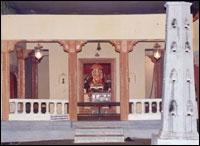 |
During the 10 days of our centenary festival, thousands of people, from different castes and communities, even celebrities from different fields, queued up to have a Darshan. The beautiful idol of Shree Ganesh, the ambience of a temple and a Wada from the Peshwa era and the decoration in the mandap were really eye-catching. All the programmes during these 10 days were conducted in the most efficient and disciplined manner.
|
Centenary Ganesh Festival (contd...)
11 days of the Festival.
On Monday, August 31, 1992 a huge procession for the Ganesh idol's arrival took place. The route was changed this year so that all Girgaumwallas could have a darshan of the idol.
|
Centenary Ganesh Festival (contd...)
|
Centenary Ganesh Festival (contd...)
One of the most memorable programmes of the festival was Pt. Hridyanath Mangeshkar's 'Bhavasargam' which took place on Tuesday, September 8.
Mangeshkar spoke of his experience in the field of music and of the 'cheeja' from classical music on which he has based some of his songs. Mangeshkar was well accompanied by Sonali Rathod. The popularity of Mangeshkar can be gauged from the fact that music lovers did not move from their seats between 10.30pm and 3.30 am next day.
Mangeshkar spoke of his experience in the field of music and of the 'cheeja' from classical music on which he has based some of his songs. Mangeshkar was well accompanied by Sonali Rathod. The popularity of Mangeshkar can be gauged from the fact that music lovers did not move from their seats between 10.30pm and 3.30 am next day.
 |
On Wednesday, September 9, Annakot was held. This is a competition in which local residents prepare interesting dishes from suggested ingredients. These are judged by a judge invited specially for the occasion. A one-man collection of Ganesh idols was also held at the venue at the same time.
The same night a touching farewell ceremony was held. Former Assembly Speaker Balasaheb Bharde was the chief guest. |
Tuesday, September 10, The grand final of a festival, which was full of high quality, programme. All the active workers of the festival were visibly upset. The expressions on their face said that they did not want the festival to get over so soon. With heavy hearts they did adieu to their dear Ganesh. Celebrities like L. K. Advani, Murli Manohar Joshi, Sachin Tendulkar, then BMC commissioner Sharad Kale visited the festival and had a darshan of the Ganesh idol. Devotees from Girgaum and suburbs queued up to take his darshan.
|
The Sanstha workers did a wonderful job of maintaining discipline among the devotees during the day and the audiences during nights. That's why crowd-pulling programmes like the Kalyanji Anandji and Pt. Hridayanath Mangeshker could be managed.
Religious programmes are an integral part of our festival. In the centenary year apart from keertans, pravachan, Mantrajagar and Sahastravartan, there was a bhajan programme everyday. Also two Yagnas-Ganeshyag and Brahmanspatisukta were held. |  |
What needs to be mentioned about the festival is the mandap and decoration. Art direction Manohar Achrekar had freated a mahal from Peshwa era. A metal foil work of Ganesh idol, craved by young artist Suresh Ghewde was also attracting attention. Pt. Hridayanath Mangeshkar complimented it in one word 'Khandani'.
A remarkable achievement of the centenary year was that the young workers of the chawl united like never before. May the lord inspire them to be one in future too!
Vrunda Juwale
|
Designed, Developed, Maintained and Hosted by India Web Services, Inc.
|
| ||||||||||||||||||||||||||||
Search Results
Bal Gangadhar Tilak and Ganesh Chaturthi in India ...
www.youtube.com/watch?v=t3RhNIctvQc
Aug 29, 2014 - Uploaded by Next9News
Ganesh Chaturthi starts today all across the country, celebration can be felt all across the country. This ten- day ...Popular Bal Gangadhar Tilak & Ganesh Chaturthi videos ...
https://www.youtube.com/playlist?list=PLxq3rfhJx-Saaw...
Bal Gangadhar Tilak and Ganesh Chaturthi in India. by Next9News. 11:59 ... Zee24Taas :Ganesh Festival of Lokmanya Tilak in Thane. by ZEE 24 TAAS. 1:23.Subodh Bhave, Om Raut - Team Lokmanya At Keshavji ...
www.youtube.com/watch?v=qB56XTzIDPE
Aug 28, 2014 - Uploaded by Rajshri Marathi
Check out the special interview with team Lokmanya - new Marathi movie, ... Raut - Team Lokmanya At ...Ganesh Murti Sthapana & Sri Bal Gangadhar Tilak Full History
www.youtube.com/watch?v=knsuXpmX1-k
Nov 1, 2012 - Uploaded by Rajiv Dixit
Ganesh Murti Sthapana & Sri Bal Gangadhar Tilak Full History - Rajiv Dixit ... The story of Bal Gangadhar ...Lokmanya Tilak -by G. P.Pradhan - YouTube
www.youtube.com/watch?v=KLOwoNITtbo
Jul 30, 2010 - Uploaded by Global Marathi
On the Occasion of the 09th Death Anniversary of Lokmanya Tilak late Prof. G. P. Pradhan Speak In the Audio ...Lokmanya Bal Gangadhar Tilak - Origin of the Ganpati ...
www.youtube.com/watch?v=P-rta2CBpsk
Sep 8, 2014 - Uploaded by Rajshri Marathi
Lokmanya Bal Gangadhar Tilak - Origin of the Ganpati Festival ... It is dedicated to Lord Ganesha and ...Ganesha Upanishad Ganesh Chaturthi Special - YouTube
www.youtube.com/watch?v=JUoFdLwlDlc
5 days ago - Uploaded by mantra cures
In 1893 Lokmanya Tilak praised the concept of SarvajanikGanesh Utsav in Kesari Newspaper. In 1894, he ...Ganesh Chaturthi - Special Animated Short Film - YouTube
www.youtube.com/watch?v=gKsXskN9KoM
Aug 28, 2015 - Uploaded by monu prajapati
In 1894 Nationalist Leader Lokmany Tilak installed Ganesh idol in Kesari wada too and started preaching ...Dhating during Ganesh Chaturthi - Dhating India - YouTube
www.youtube.com/watch?v=JegUB0-AeyA
Sep 6, 2015 - Uploaded by Dhating India
The idea of celebrating Ganesh Chaturthi publicily was praised byLokManya Tilak. We want to make people ...Ganesh Chaturthi - Aaley Ganray (September) - DD Sahyadri
ddsahyadri.in/shows.php?id=OTc=&cat=Nw==
Stay up to date on results for Lokmanya tilak And Ganesh chaturthi.
Create alertSearch Results
-
More images for Lokmanya tilak And Ganesh chaturthi
Ganesh Chaturthi - Wikipedia, the free encyclopedia
https://en.wikipedia.org/wiki/Ganesh_Chaturthi
Ganesha Chaturthi (Gaṇēśa Caturthī or Vināyaka Caviti) is the Hindu festival ... In 1893 Lokmanya Tilak praised the concept of Sarvajanik Ganesh Utsav in ...
Why & how Lokmanya Tilak started Sarvajanik Ganpati ...
www.ecoganesha.org › FAQs
When Lokmanya Tilak was in great distress and worried about our country's freedom. ... adopt clay idols while worshipping Lord Ganesha on Ganesh Chaturthi?Ganesh Chaturthi and Tilak - Festivals - iloveIndia.com
festivals.iloveindia.com › Ganesh Chaturthi
Bal Gangadhar Tilak was the man behind the reformation of Ganesh Chaturthi as a public event. Read on to explore his contributions.Ganesh History, Ganesha History, Ganpati History
ekmev.com/z_english_ganeshhistory.htm
... Ganpati History, History behind Ganesh Chaturthi, History behind GaneshotsavHistory of Ganesh Chaturthi - TheHolidaySpot
www.theholidayspot.com/ganesh_chaturthi/history.htm
Learn the history of ganesh chaturthi, and the birth of Lord Ganesha. ... especially of Maharashtra, Tilak was commonly referred to as "Lokmanya" or "he who is ...Ganesh Chathurthi - TAMIL NADU - The Hindu
www.thehindu.com/todays.../tp.../ganesh-chathurthi/article2416513.ece
Sep 1, 2011 - The large scale public celebration of Ganesh Chaturthi Festival was started by Bal Gangadhar Tilak in 1893 in Pune. The main intention of Tilak ...How Ganesh Chaturthi became a public festival - Rediff.com
www.rediff.com › News
Sep 17, 2004 - Till the turn of the 20th century, Ganesh Chaturthi was celebrated only in ... freedom fighter Lokmanya Tilak started the custom of 'Sarvajanik ...Lokmanya Tilak & the Ganesh festival - Freedom Movement
www.bombay-book.htmlplanet.com/catalog.html
The public celebration of the Ganapati festival -- Sarvajanik Ganeshotsav -- was started by Lokmanya Bal Gangadhar Tilak in 1893. This website attempts to ...Bal Gangadhar Tilak | My Lord Ganesha
mylordganesha.com/tag/bal-gangadhar-tilak/
Posts about Bal Gangadhar Tilak written by Vikram Kharvi. ... Ganesh Chaturthicelebrations were not confined to the Maharashtra Sadan as colourful Ganapati ...Searches related to Lokmanya tilak And Ganesh chaturthi
Kharghar, Navi Mumbai, Maharashtra - From your Internet address - Use precise location





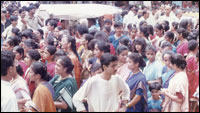

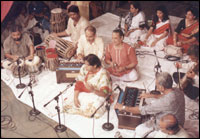

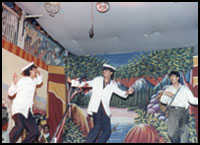
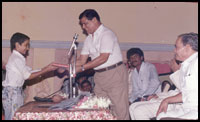
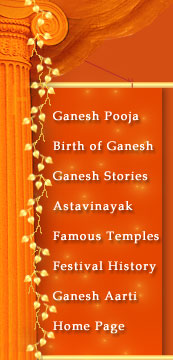

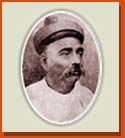







No comments:
Post a Comment